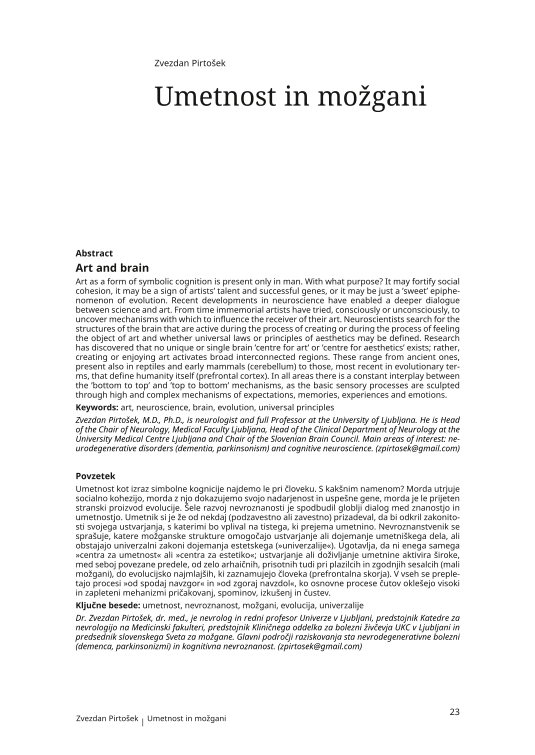Art as a form of symbolic cognition is present only in man. With what purpose? It may fortify social cohesion, it may be a sign of artists’ talent and successful genes, or it may be just a ’sweet’ epiphenomenon of evolution. Recent developments in neuroscience have enabled a deeper dialogue between science and art. From time immemorial artists have tried, consciously or unconsciously, to uncover mechanisms with which to influence the receiver of their art. Neuroscientists search for the structures of the brain that are active during the process of creating or during the process of feeling the object of art and whether universal laws or principles of aesthetics may be defined. Research has discovered that no unique or single brain ’centre for art’ or ’centre for aesthetics’ exists; rather, creating or enjoying art activates broad interconnected regions. These range from ancient ones, present also in reptiles and early mammals (cerebellum) to those, most recent in evolutionary terms, that define humanity itself (prefrontal cortex). In all areas there is a constant interplay between the ’bottom to top’ and ’top to bottom’ mechanisms, as the basic sensory processes are sculpted through high and complex mechanisms of expectations, memories, experiences and emotions.




